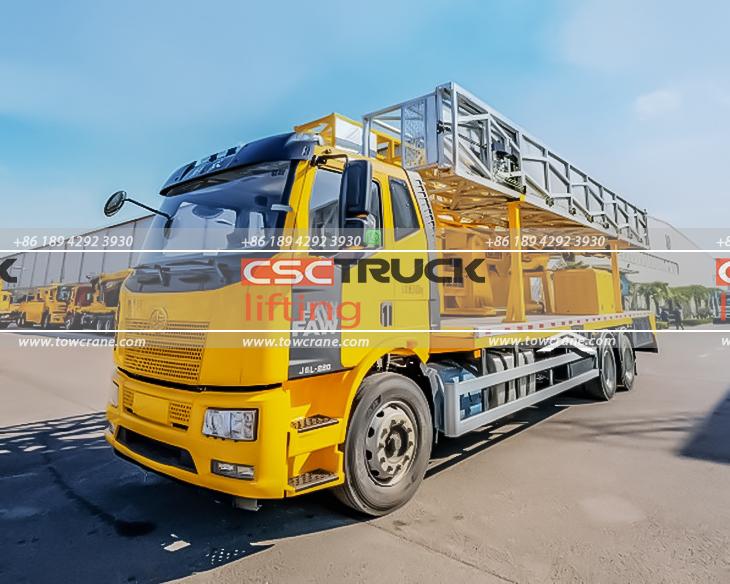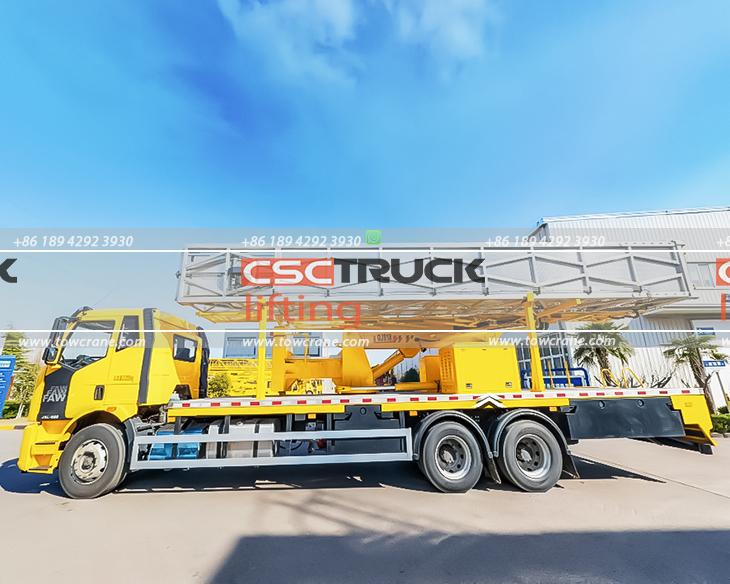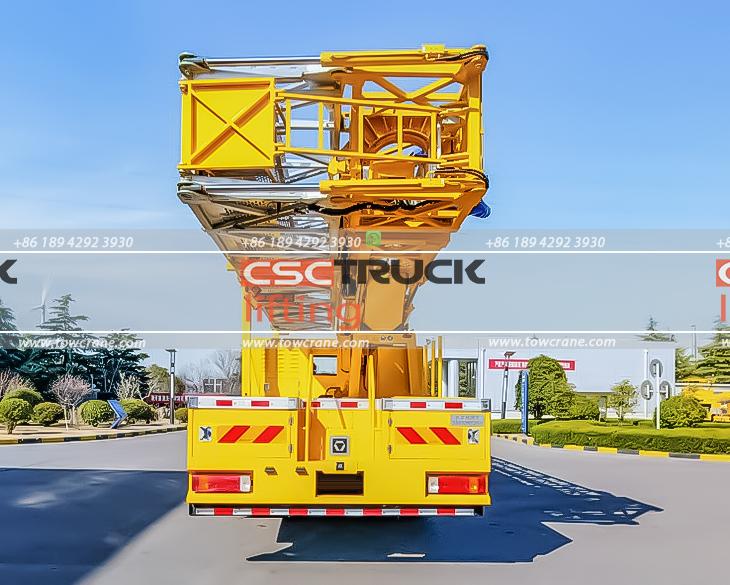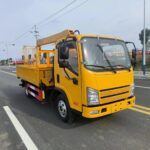Bridges are vital components of our transportation infrastructure, facilitating the movement of goods and people across otherwise insurmountable obstacles like rivers, valleys, and other roads. Given their importance, ensuring their structural integrity through regular inspections is paramount. Bridge inspection platforms play a crucial role in this process, offering a means to access hard-to-reach areas of a bridge safely and efficiently. This article explores the top-rated bridge inspection platforms that enhance safety and efficiency, ensuring that our bridges remain reliable and secure.
The Importance of Bridge Inspections
Bridge inspections are necessary to identify and address potential issues before they lead to catastrophic failures. These inspections help detect structural deficiencies, corrosion, cracks, and other signs of wear and tear. Regular inspections are mandated by regulatory bodies such as the Federal Highway Administration (FHWA) in the United States, which requires bridges to be inspected at least once every 2 years.

Types of Bridge Inspection Platforms
Bridge inspection platforms come in various types, each suited to specific inspection needs and bridge designs. The main types include:
1. Under Bridge Inspection Vehicles (UBIVs): These specialized vehicles are equipped with articulated arms that can extend under the bridge, allowing inspectors to access the underside without requiring lane closures or scaffolding.
2. Aerial Drones: Drones equipped with high-resolution cameras and sensors can fly around and under bridges, capturing detailed images and data. They are particularly useful for initial inspections and hard-to-reach areas.
3. Rope Access: Trained inspectors use ropes and harnesses to climb and maneuver around the bridge structure. This method is highly flexible and can reach areas that other platforms might not.
4. Scaffolding and Platforms: Traditional scaffolding and custom-built platforms are still used for detailed inspections and repairs. These structures provide stable and secure access for prolonged work periods.
5. Robotic Crawlers: These remote-controlled devices can navigate bridge surfaces, capturing images and data. They are particularly useful for inspecting confined spaces and areas with limited accessibility.
Top-Rated Bridge Inspection Platforms
1. Aspen Aerials A-62: The Aspen Aerials A-62 is a top-rated UBIV known for its versatility and reach. It features a 62-foot horizontal reach and can be quickly deployed, minimizing traffic disruptions. The A-62’s robust design allows it to handle challenging conditions, making it ideal for various bridge types.
2. DJI Matrice 300 RTK: The DJI Matrice 300 RTK is a state-of-the-art drone widely used in bridge inspections. With its advanced sensors, oo ay ku jiraan LiDAR and high-resolution cameras, it can capture detailed images and create 3D models of bridge structures. Its robust flight capabilities ensure stability and precision, even in windy conditions.
3. Sky Climber Suspended Platforms: Sky Climber offers a range of suspended platforms that provide stable and secure access to bridge surfaces. These platforms can be customized to fit specific bridge designs and inspection needs, ensuring comprehensive coverage.
4. ROAV’s Rope Access Services: ROAV is a leader in rope access services, offering highly trained technicians who can perform detailed inspections and maintenance. Their expertise allows them to access the most challenging areas of a bridge, ensuring no part is left unchecked.
5. GE Inspection Robotics’ BIKE Platform: The BIKE platform by GE Inspection Robotics is a robotic crawler designed for bridge inspections. It can traverse various surfaces, including vertical and overhead areas, capturing high-resolution images and data. Its compact design allows it to access confined spaces that other platforms cannot reach.

Enhancing Safety and Efficiency
Bridge inspection platforms enhance safety and efficiency in several ways:
1. Reduced Risk to Inspectors: Platforms like UBIVs, drones, and robotic crawlers minimize the need for inspectors to work in hazardous conditions. This reduces the risk of falls, exposure to traffic, and other dangers associated with traditional inspection methods.
2. Minimized Traffic Disruptions: Modern inspection platforms can often be deployed with minimal impact on traffic flow. UBIVs, for instance, can operate from the side of the bridge without requiring lane closures, while drones can fly around the structure without causing any disruption.
3. Enhanced Data Collection: Advanced platforms equipped with high-resolution cameras, LiDAR, and other sensors can collect detailed data that is often superior to what can be gathered through visual inspections alone. This data can be used to create accurate 3D models, identify hidden defects, and monitor changes over time.
4. Cost-Effective Solutions: While the initial investment in advanced inspection platforms may be high, the long-term benefits often outweigh the costs. These platforms can perform inspections more quickly and thoroughly than traditional methods, reducing the need for repeated inspections and costly repairs.
5. Improved Accessibility: Platforms like rope access and robotic crawlers can reach areas that are difficult or impossible to access with other methods. This ensures that the entire bridge structure can be inspected, leaving no stone unturned.
Future Trends in Bridge Inspection
The field of bridge inspection is continually evolving, with new technologies and methods emerging to further enhance safety and efficiency. Some future trends include:
1. Artificial Intelligence (AI) and Machine Learning: AI and machine learning algorithms can analyze inspection data to identify patterns and predict potential issues. This can help prioritize maintenance and allocate resources more effectively.
2. Autonomous Drones: The development of fully autonomous drones could revolutionize bridge inspections. These drones could perform regular inspections without human intervention, continuously monitoring the bridge’s condition and detecting any changes.
3. Advanced Robotics: Robotics technology is advancing rapidly, with new designs offering greater mobility and capabilities. Future robotic crawlers and other devices could provide even more comprehensive and detailed inspections.
4. Integration with Building Information Modeling (BIM): Integrating inspection data with BIM systems can provide a holistic view of the bridge’s condition and maintenance history. This can improve decision-making and facilitate more effective asset management.

Gabagabo
Bridge inspection platforms are essential tools for maintaining the safety and integrity of our transportation infrastructure. The top-rated platforms discussed in this article offer enhanced safety and efficiency, ensuring that bridge inspections are thorough, accurate, and minimally disruptive. As technology continues to advance, these platforms will become even more sophisticated, providing new opportunities for improving bridge inspection processes and safeguarding our critical infrastructure. Investing in these cutting-edge tools and methods is not just a matter of compliance but a commitment to public safety and the longevity of our bridges.









